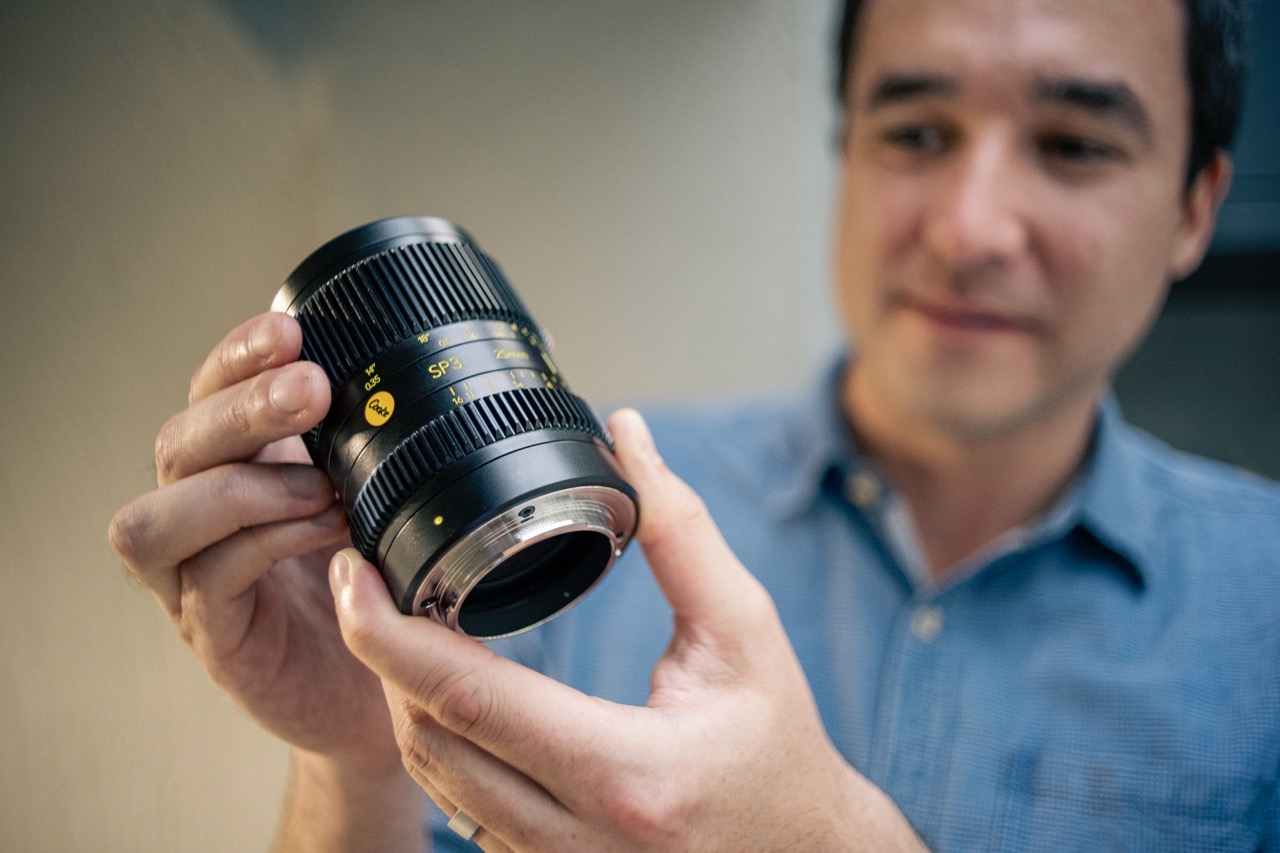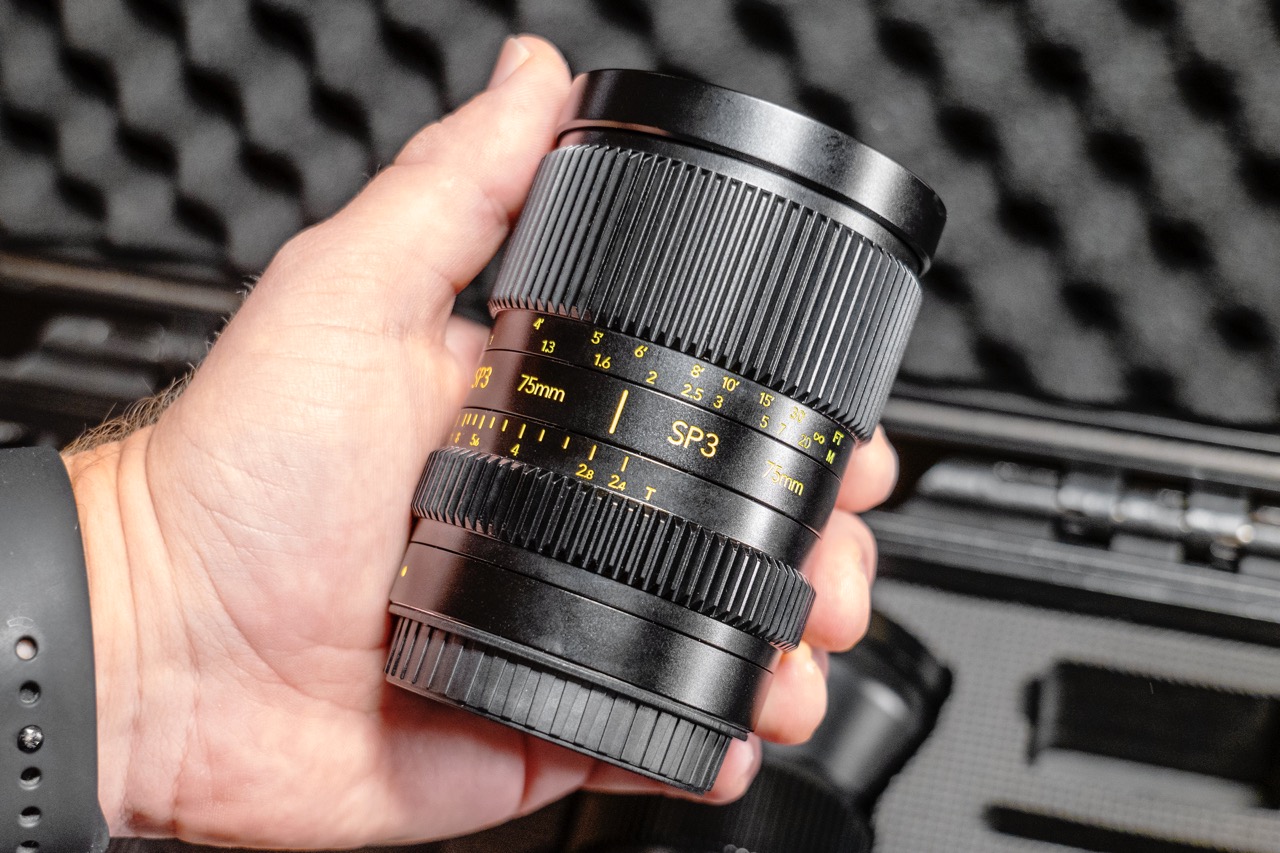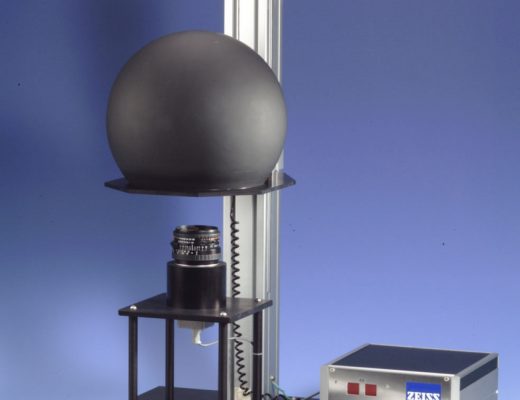
The five focal lengths in the new Cooke SP3 series for full frame mirrorless camera form just the base-set says Andy Buckland, Director of Product Management for Cooke Optics. Buckland says the company will be listening to feedback from users all over the world to determine which additional focal lengths are required. Given that the company has announced five focal lengths for starters we can safely assume there will be at least three more in the range eventually. Something wider than the existing 25mm will be a strong option as well as something in the 135mm-180mm range, and perhaps one or two focal lengths in-between the 25mm, 32mm, 50mm, 75mm and 100mm offer at the launch of the system. The current Speed Panchro/i Classic series contains a choice of 12 focal lengths, but Buckland says the new SP3 series is unlikely to grow as large – in the short term at least.

These new mirrorless lenses, just like the Speed Panchro/i Classics, are based on the optical construction and characteristics of the Cooke Speed Panchro Series lll lenses that were designed and manufactured in the 1950s. The lenses are based on the original designs rather than replicating them exactly as many of the heavy-metal glass and radioactive materials employed in the 1950s can no longer be used today, so Cooke has made small adjustments in the designs to achieve the same look. Cooke Optical Designer Graham Cassely explained that he was able to study the original hand-written and manually calculated prescriptions (measurements) for the Series ll and Series lll lenses in the Cooke archive and adjust the curve of certain elements to compensate for the changed materials. He also explained that making these lenses for mirrorless system cameras allowed a little more space within the barrels to optimize the designs. ‘The idea was to keep the SP3 lenses small and lightweight,’ Cassely told me, ‘hence the slightly smaller aperture of T2.4 instead of the T2.2 of the 2021 Speed Panchro Classic series and the f/2 of the originals. Had we used T2 for example, these lenses would have been about 30% bigger and they would have weighed more, so it would have defeated the object of the concept. The non-linear nature of the iris and focus settings also helps to keep the size of each lens down, as does the minimum aperture of T16. Stretching to T22 would have required a much larger iris unit.’

‘Another change we’ve made to the original designs is unifying the number of blades in the iris of the lenses for the SP3 series. The original lenses had a mixed number of blades from 11 or so in some of the wide angles, to just six in some of the telephoto lenses, but all the new lenses have nine blades. The iris control has also switched position with the focus ring, so now the aperture ring is closer to the mount than the focus ring – in line with modern standards. The focal lengths we’ve picked are quite traditionally ‘Cooke’, such as the 32mm and 75mm – focal lengths we’ve always supplied and which you don’t always see from other lens manufacturers.’

‘Our main aim though was to ensure the SP3 lenses have the same distinct ‘Cooke Look’ as the 1950s models, and to make sure they work well alongside the 2021 Speed Panchro/i Classic lenses so they not only look authentic but so they can be used on B and C cameras and their footage will fit-in perfectly with the Speed Panchros Classics on the A camera. The look is of warm skin tones, and detail in the centre of the frame that rolls off towards the edges of the picture. Contrast is low and focus rolls on and off very smoothly, and bokeh is clean, rounded and slightly hotter on one side than the other. We’ve used the same single-layer coatings that we used in 1950 too, so there is some flare to soften the image but it’s well-controlled and won’t take over from the subject. The coatings on the exit element are also the same as the original series lll coatings, so narcissist flare will match the look of the originals as reflections from different sensors replace reflections from different film stocks. The soft feel to the lenses works particularly well with modern digital sensors that can feel quite clinical and sharp with regular lenses.’

One of the most remarkable features of these lenses is their price. Cooke S8 series lenses cost in the region of 8x more than these SP3 lenses, and Cooke confirmed to me that these are the lowest-cost lenses the firm has ever produced. With the quality of mid-market cameras increasing dramatically over the last few years, Cooke wanted a set of lenses that would appeal to owners of mirrorless cameras such as the Sony FX series, Lumix S models, Red and other mid-range full-frame cinema-capable machines.

With the whole set of current focal lengths costing less than half the price of a single S8 lens, demand is expected to exceed the usual manufacturing capabilities of the company, even with its new production facility in Leicester, England. Consequently, the new lenses will be made by a third-party manufacturer in China on a production line specifically designed by and for Cooke, and controlled by Cooke from the UK. Chief Marketing Officer Danny Haikin assures us that the production facility will be controlled as though it were just another in the main factory and that quality standards will be equal to those Cooke users have come to expect.

In the design of the lenses, consideration has been given to making the lenses relatively easy to build and to the use of common components for efficiency and to allow the lower price of the lenses. Optical designer Graham Cassely says though, that there have been no moves to homogenise the characteristics of the lenses and that each will have the same individuality as the equivalent Series lll lens.

On arrival, the SP3 lenses will be fitted with a Sony E mount, but each lens will come with an adapter for Canon RF as well. Mounts are user changeable and are just held in place with screws as there are no electronic connections to complicate matters. Each lens will also be shimmed in the factory, and each mount will be supplied with a set including the same shims, so users only have to replicate the shim stack of their factory-set lenses with the shims supplied with the mount. Cooke will also offer L mount adapters for L-Mount Alliance cameras such as Leica, Lumix, Sigma and DJI, and M adapters for Leica rangefinder owners and for those using the Arri Alexa LF with the LPL mount that can accommodate an M mount adapter. The optional L and M mounts will cost £345 each.

As you would expect, the lenses are designed to have matched iris and focus ring positions to make switching between focal lengths easier when working with lens control systems. The lenses should be relatively easy to switch on a gimbal too, as the 32mm, 50mm and 75mm weigh between 500-520g – the 25mm weighs 575g and the 100mm 690g. The 100mm has a larger front element too, so takes a 77mm filter rather than the 58mm size of the other lenses. Focus is marked in metric and imperial measurements on each lens, and the focus ring rotates about 160 degrees – quite short for a cine lens.

The Cooke SP3 lenses will be available by the middle of this month, individually and as a set of five. The L mount adapter will also be available at the same time, and the M mount adapter will become available early next year. While the RF adapters come included in the price and will be included in the packaging of the lenses – a small case for individual lenses and a hard case for the kits – initial orders will see the RF adapter supplied separately in a small custom box.

For more information, see the Cooke Optics website, and see the company’s YouTube channel for sample footage and background information.

Filmtools
Filmmakers go-to destination for pre-production, production & post production equipment!
Shop Now













